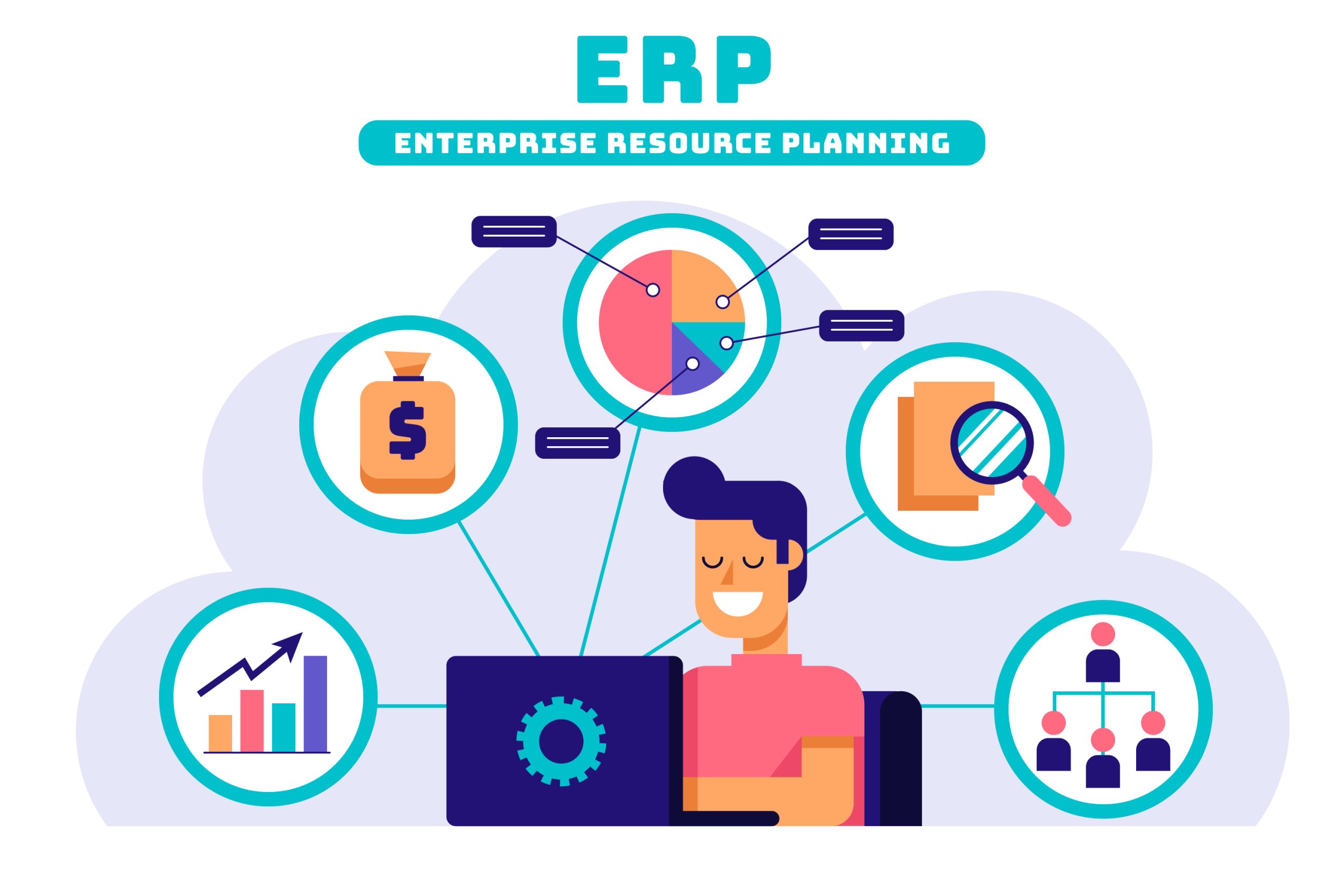In the modern business landscape, organizations strive for seamless integration and automation of their operations to enhance productivity, streamline processes, and improve collaboration. Two critical components that contribute to achieving these goals are Enterprise Resource Planning (ERP) systems and Electronic Data Interchange (EDI). In this blog post, we will delve into the difference between ERP and EDI and explore how Abhisan Technology can help businesses effectively leverage these technologies together to drive operational efficiency and success.

-
Understanding ERP: ERP refers to an integrated software system that enables organizations to manage and automate various core business processes, including finance, human resources, procurement, manufacturing, inventory management, and more. It serves as a central repository of data, allowing different departments to access and share information in real-time. ERP systems provide a holistic view of the organization, enabling data-driven decision-making and facilitating efficient resource allocation.
-
Exploring EDI: EDI, on the other hand, stands for Electronic Data Interchange. It is a standardized electronic communication method that facilitates the exchange of business documents between trading partners. EDI replaces paper-based and manual processes by electronically transmitting documents such as purchase orders, invoices, shipping notices, and acknowledgments. EDI ensures faster, more accurate, and secure data exchange, eliminating errors and reducing processing time.
-
The Key Differences: While both ERP and EDI are essential components of modern business operations, it’s important to understand their distinct roles:
a. Scope: ERP systems cover a wide range of internal processes, providing a comprehensive view of the organization. EDI, on the other hand, focuses primarily on the exchange of business documents with external partners.
b. Functionality: ERP systems encompass various modules that support different business functions, including finance, inventory management, and manufacturing. EDI, however, acts as a communication tool, enabling the seamless transfer of standardized documents.
c. Data Management: ERP systems serve as a centralized database for managing internal data and processes. In contrast, EDI facilitates the secure exchange of data between external partners, ensuring data integrity and confidentiality.
-
Leveraging ERP and EDI Together: Integrating ERP and EDI systems can yield significant benefits for businesses:
a. Streamlined Operations: By integrating EDI with ERP, businesses can automate the exchange of critical business documents, eliminating manual data entry and reducing processing time. This leads to streamlined operations, improved accuracy, and enhanced efficiency.
b. Enhanced Supply Chain Collaboration: Integrating ERP and EDI enables seamless communication and collaboration with suppliers, customers, and other stakeholders. Real-time data exchange ensures timely order processing, inventory management, and shipment tracking, fostering stronger relationships and better supply chain visibility.
c. Data Accuracy and Consistency: Integrating ERP and EDI systems eliminates the need for duplicate data entry, reducing the risk of errors and ensuring data accuracy and consistency across the organization.
d. Scalability and Flexibility: The integration of ERP and EDI systems allows businesses to scale their operations and adapt to changing business needs. It provides the flexibility to add new trading partners, expand into new markets, and meet evolving compliance requirements.
In today’s digitally connected world, the integration of ERP and EDI systems is crucial for organizations aiming to streamline operations, optimize supply chain management, and achieve greater efficiency. Abhisan Technology understands the unique requirements of businesses and offers comprehensive solutions that seamlessly integrate ERP and EDI systems. By leveraging Abhisan Technology’s expertise, businesses can unlock the full potential of these technologies, enhance collaboration with trading partners, and drive sustainable growth in an increasingly competitive market.
